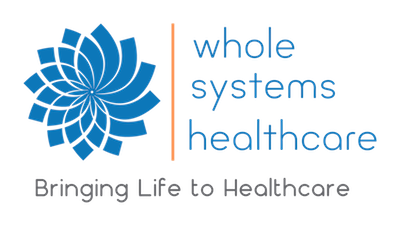Ketamine Therapy has been gaining attention in recent years. Initially discovered and synthesized in 1962, ketamine has been used for decades to treat pain, and as an anesthetic for surgery. More recently it has gotten attention for treating mental health issues such as depression, suicidal thoughts, and post-traumatic stress disorder (PTSD), and is being investigated for its capacity to treat other conditions such as anxiety, bipolar, obsessive-compulsive disorder, eating disorders, and addiction.
Known as a dissociative analgesic, ketamine creates a subjective feeling of distance between a person’s sense of self and the sensations and experiences of the body. This is what makes it effective for physical pain, and what is likely responsible for its impact on psychological and emotional pain as well.
However, not all people respond favorably to ketamine, and even among those who experience a positive impact the improvement after ketamine therapy is often relatively short-lived. Ketamine, like all substances, also has its share of side effects. In the allopathic community there is no way to predict how ketamine will impact someone, and whether they will experience any unwanted side effects. However, by studying both the positive and negative effects of ketamine and applying the wisdom of Chinese Medicine, an understanding of its full potential can be gained. Then this understanding can be used to much more reliably predict who will respond well, who is at risk of side effects, and what other treatments can be used to increase the efficacy of ketamine therapy.
Physical Effects of Ketamine
Despite ketamine therapy focusing on the emotional and psychological effects of ketamine, much understanding can be gained from examining its more physical effects. Ketamine, like most strong substances, produces a variety of effects, which can be found listed under the adverse effects section on the drug. Effects include:
Increased blood pressure, increased heart rate, increased intracranial pressure, tonic-clonic movements (cramping and spasms), seizures, visual hallucinations, vivid dreams, low blood pressure, decreased heart rate, double-vision, increased intraocular pressure, nausea and vomiting.
With long-term use symptoms in the bladder and gallbladder emerge, such as inflammation of the bladder with painful urination, frequent urination, and incontinence; and inflammation of the liver and gallbladder with dysfunction of the bile duct.
Of course, the main use of ketamine is for anesthesia and for pain. It creates a dissociative state where the person does not feel pain and often does not remember their experience, and is used for short but intense procedures that could be painful or disturbing, such as setting a broken bone. In this setting it is useful because it does not inhibit respiration or heart rate, unlike most other anesthetics, which tend to slow the breath and the heart. It is also used for both acute and chronic pain.
Another effect that is more noticeable at small doses is that it creates a significant lack of coordination, and if the person is still able to walk they typically stumble and run into things if they aren’t careful.
The Liver in Chinese Medicine
Almost the entire list of ketamine’s acute effects from the above section can be attributed to its impact on Liver function. The increase in blood pressure, intraocular pressure, intracranial pressure, the cramping, spasms, and seizures, the vivid dreams, the nausea and vomiting, the lack of coordination, as well as the effect on pain can all be attributed to the Liver. However, the Liver in Chinese Medicine is much more than the physical organ in the abdomen: it has physical, physiological, emotional, mental, and spiritual dimensions. Because these dimensions are linked together, looking at the physical effects of ketamine can illuminate how it functions in the psychospiritual realm.
The Liver is one of the five major organ systems of Chinese Medicine, each corresponding to one of the 5 phase-elements (Water, Wood, Fire, Earth, Metal). The Liver is the Wood organ, and is correlated with a cluster of correspondences, connecting the natural world with human experience. Wood is the phase of springtime, of new beginnings, of sprouting, growing, expanding; Wood is associated with Wind, a universal metaphor for movement and change. The Liver is in charge of all movement, both physical, emotional, and spiritual. In the Huang Di Nei Jing (The Yellow Emperor’s Inner Classic), the Liver is said to govern the free flow of qi and Blood, and ensures proper movement of the muscles, blood, fluids, and nerve activity. The Liver, being in charge of movement, is also in charge of strategy, direction, and planning, and is likened to the general of an army, determining and coordinating the movements of all the troops.
The Liver also houses the hun, commonly translated as the Ethereal Soul. The character for hun 魂 is composed of two parts: on the left is “cloud”, and on the right is “gui”, typically translated as ghost or spirit. The hun is the aspect of our being that dreams, that floats and flits through the world of our imagination, and that gives us vision and direction. Lorie Eve Dechar, in Five Spirits: Alchemical Acupuncture for Psychological and Spiritual Healing, writes that the hun is responsible for sleeping and dreaming, for emotional balance, for decision making and planning, and for vision and imagination.
She further discusses how the hun connects and communicates between the light of divine, intuitive, transpersonal, conscious awareness (the shen, Spirit), and the unconscious, instinctual impulses that sustain and enliven the body (the po, the Corporeal Soul). If this connection is weak, or the movement of the Liver is too constrained, the hun is said to be disturbed, which can result in symptoms such as depression, insomnia or sleeping too much, emotional instability, irritability and impatience, timidity, and lack of “vision” or direction in life.
Ketamine and the Liver
At the physical level, the side effect profile for ketamine points to its opening and stimulating effect on the Liver. All the physical symptoms suggest that ketamine strongly moves the Liver qi, which if excessive results in expansion (increased pressure in the blood, eyes, and head) and uncontrolled movement (the muscle cramping, spasms, and seizures). This uncontrolled movement is also known as Liver yang rising or Liver Wind in Chinese Medicine.
At the psychospiritual level ketamine helps to unblock the hun and create movement in the imaginal realm. It pulls the hun away from the po and the material body, allowing the hun to soar unencumbered, moving more easily through the more ethereal planes of imagination and fantasy. This is where visioning occurs, where we dream and imagine what life could be like, where we make plans for the future, and where we gain perspective on both who we are and who we want to be.
Who Benefits from Ketamine
This understanding of how ketamine affects the Liver and the hun helps explain why it works well for some people, less well for others, and creates negative experiences in people for whom it is inappropriate. Ketamine is an excellent therapy for those people whose hun is stagnated, repressed, weighed down, or otherwise unable to move freely; they are thus experiencing a lack of vision, direction, and motivation; they may not know who they really are, and have difficulty imagining where they want to go in life, and what they want to do. They may feel stuck, and may either feel numb, or angry, or both. For these people ketamine can help free up the Liver qi stagnation and assist them in seeing new possibilities for themselves.
Who Should Not Use Ketamine
Ketamine will adversely affect those people who already have too much movement in the Liver, and whose hun are too loosely anchored to the physical body. These are people who have excessively vivid dreams, who are always daydreaming or fantasizing, and have overactive imaginations; they may also have physical symptoms of Liver Wind or of Blood deficiency (lack of Blood to anchor the hun) such as:
Blood Deficiency
- Easy faintness
- Pale tongue
- Dry skin and hair
- Brittle nails
- Dry eyes or floaters
- Dull headaches
- Anxiety
- Heart palpitations
- Waking in the middle of the night
- Poor short-term memory
Liver Wind
- Seizures, convulsions
- Movement disorders, trembling, tics and twitches
- Dizziness and vertigo
- Numbness
- Paralysis
- Stroke
In general ketamine will be very helpful for people that are “stuck”, and will be harmful for people who are “scattered”. These are qualitative terms that are designed to invoke a particular experience of a person. Someone who is depressed, unmotivated, without a clear sense of themselves and without a vision for their life, or the ability to imagine something new for themselves, this is a person who will likely benefit greatly from ketamine therapy. On the other hand, someone who is anxious, scattered, who lives in their imagination or is constantly day-dreaming, or who is fearful and easily startled, could find themselves less grounded and with more anxiety after ketamine therapy.
More specifically, since ketamine has become most known for treating depression, it needs to be pointed out that there are many different types of depression, and ketamine is not appropriate for all types. Ketamine will work well for depression due to Liver qi stagnation and an inability of the hun to move freely. It will be counterproductive for depression due to Kidney yang deficiency, as the body will not have adequate qi to respond to the moving and opening effects of ketamine, and instead of relieving the depression it may actually worsen it as the body will be even more depleted afterwards. It will also be inappropriate for depression due to a lack of Fire, such as in the depressive phase with bipolar, as this situation is typically characterized by a depletion of Wood energies; again, the body will not have adequate qi to respond to the effect of ketamine, and person may feel more depleted afterwards. Primarily ketamine will be helpful when depression is due to stagnation, but is unlikely to work well when depression is due to depletion.
Other Important Considerations
In addition to the inner state of a person, setting the appropriate intention is also critical to experience benefit from ketamine therapy. Due to ketamine’s ability to pull the hun out of the body, and therefore separate a person from their daily experience of themselves, it can and is often used to simply take a vacation. There’s nothing wrong with taking a vacation; however, the issue is that when one returns, all the same problems are still there, and nothing has changed. It is only if realizations are made through the process of detaching from oneself that lasting change can occur. Therefore setting an intention before a session is very important, so the “vacation” can be used to gain perspective, rather than using the ketamine to just forget about problems for a while.
This setting of intention is where acupuncture can be extremely helpful. Using conscious awareness to set intention is very important, but especially for those that will benefit from ketamine therapy it can be difficult to anchor that intention into the body at a physical level. This is because the hun is constrained, which makes it difficult to really feel and be aware of the body. Acupuncture is a body-oriented healing modality and is able to “speak” to the body in a language it understands, that of sensation. This activation of sensation, along with the understanding that Chinese Medicine brings at the cognitive level, can dramatically increase the impact of a ketamine therapy session, and can help anchor the realizations gained while in the imaginal realm.
As people are complex, there are situations where someone has both deficiency and stagnation, and will benefit from ketamine therapy but not before more extensive preparation. This could be through bolstering their qi through diet, practicing some form of grounding exercise to help stabilize their thoughts, or any number of other interventions.
One last aspect of ketamine should be discussed. In the section above detailing ketamine’s side effects one of the impacts of chronic overuse is inflammation of the bladder. The bladder belongs to the Water phase, which in the cycle of the 5 phase-elements nourishes Wood. This suggests that overuse of ketamine depletes Water, which is consistent with its strong stimulating action on the Liver. The energy to move Liver qi and unbind the hun must come from somewhere, and it comes from the Water phase.
This impact on the Water phase suggests that people who have weakened or deficient Bladder and Kidney qi should be cautious about using ketamine, particularly on a more frequent basis. Chronic bladder inflammation such as interstitial cystitis, any kind of incontinence, as well as symptoms of adrenal fatigue should prompt a careful evaluation before engaging with ketamine.
Conclusion
Ketamine promises to be an incredibly powerful medicine for those who need it, and the integration with Chinese Medicine is likely to enhance its actions further. However, like all powerful medicines, it is not right for everybody, and care must be taken to make sure it will be a good fit. If you are considering ketamine therapy it behooves you to speak with a knowledgeable integrative or Chinese Medicine practitioner to help you get the most benefit from the treatment.



